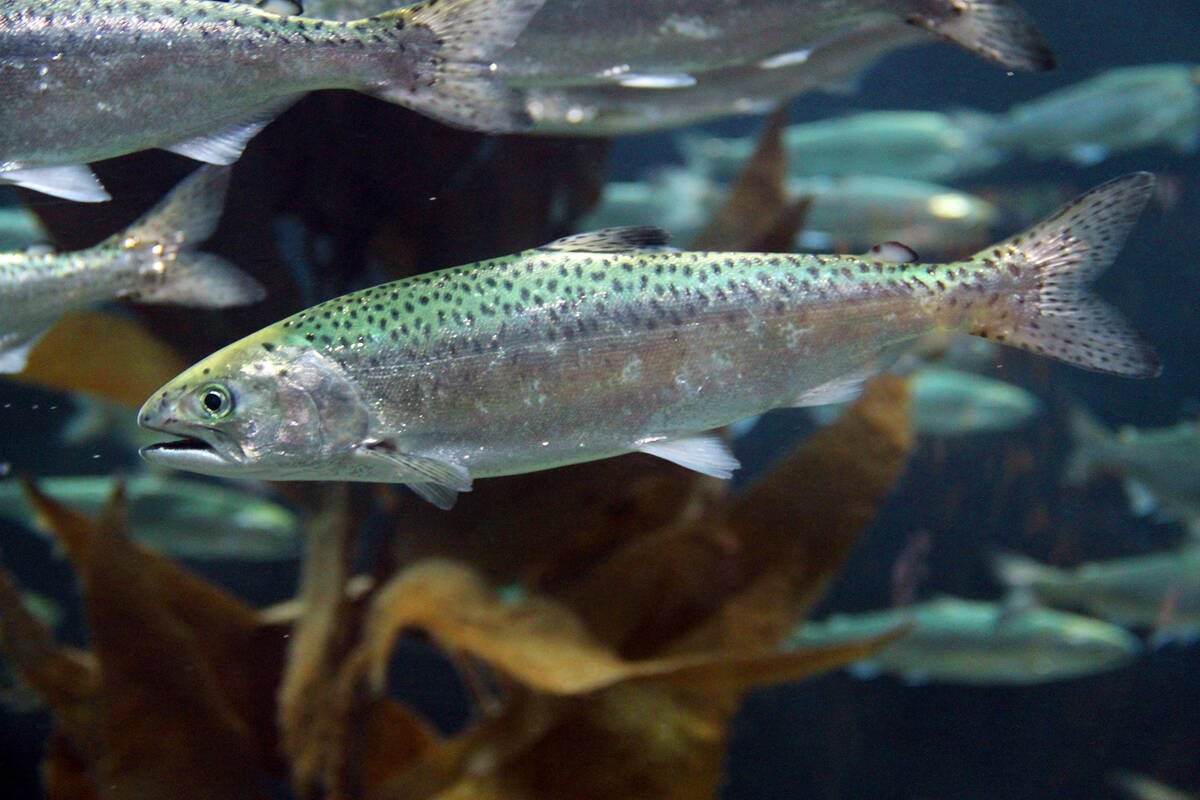SARA can be an economically
important problem for milk producers.
A little-known disease lurking silently in the rumens of dairy cows may be robbing milk producers of hundreds of dollars in lost production without anyone realizing it.
It’s basically acid indigestion but with a fancy scientific name: subacute ruminal acidosis (SARA).
SARA is a metabolic disease resulting from acid buildup in the rumen and evidenced by a low rumen pH for several hours a day.
(Low pH is acid and high pH is base. A pH around 7 is considered neutral.)
Read Also

Canadian aquaculture wants farming treatment
Canada’s fish farms want to switch federal portfolios to be under Agriculture and Agri-Food Canada’s eye rather than Fisheries and Oceans Canada’s thumb and be able to grow production.
Not much is known about SARA except that it’s increasingly common and can be costly. According to some estimates, SARA can reduce milk yield by 2.7 kg/day, resulting in a financial loss of up to $500 per cow annually.
It can also affect cows physically through laminitis, diarrhea, inflammation and even liver abscesses.
A low butterfat content in the milk can indicate the presence of SARA. Another symptom can be erratic and decreased feed intake because the cow is uncomfortable. Still another is lameness, because toxins in the blood may spread to the hooves and cause an off-gait.
But because these symptoms are not necessarily specific to SARA, the disease is hard to diagnose. The only sure way to determine it is to collect fluid from the rumen and test the pH level.
There are normally two ways of doing that: using a stomach tube (which stresses the cow) or extracting fluid with a syringe punctured through the body wall into the rumen (which also stresses her, even if done with a local anesthetic).
Now, research at the University of Manitoba has come up with an alternative method which is easier on everyone, both animal and human.
It involves analyzing the cow’s excretions – blood, urine, feces and, of course, milk – for toxins produced by certain bacteria and for blood proteins which the cow’s body produces to fight off inflammation. Both are signs of SARA.
A combined analysis of samples from several excretions is needed for an accurate result, said Kees Plazier, a University of Manitoba animal scientist and dairy specialist.
Sampling could be done by a veterinarian as part of a regular herd health program and shouldn’t be all that onerous for producers, he said.
There’s no general agreement on how low the pH in the rumen must be for SARA to occur. Thresholds range between 5.5 and 6.25. Some experiments suggest rumen pH must be lower than 5.6 for three hours a day, Plazier said.
Once SARA has been diagnosed, the most direct treatment is drenching the affected cow with sodium bicarbonate to neutralize the acid. The long-term solution is formulating the diet to prevent SARA from occurring, said Plazier.
It’s generally felt that too much grain in a dairy ration can cause SARA because grain is a starch which promotes acid production in the stomach. A cow’s saliva contains a natural base which helps neutralize acid, but only if she chews her cud to generate saliva.
Thirty years ago, SARA wasn’t
such an issue because cows were grazed on pasture. Over time, however, cows were housed indoors and given grain in their rations to boost milk production. It did, but it also increased the risk of acidosis.
Besides formulating rations
GLEN NICOLL
to include less grain, producers should also ensure feed particles in dry matter are adequately coarse to promote chewing, Plazier said. If the chop length of dry matter is too short, cows will chew it less, produce less saliva and increase the risk of acid buildup.
Because SARA is difficult to diagnose, information on its incidence is limited. Plazier said one survey of dairy farms in Wisconsin showed the presence of SARA in 19 per cent of early-lactation cows and 26 per cent of mid-lactation cows. Another survey found SARA in 20 per cent of early-and peak-lactation cows.
This shows SARA can be an economically important problem for milk producers, he said.
The U of M study involved funding from Dairy Farmers of Canada, the Manitoba Rural Adaptation Council and the Agr iculture Research and Development Initiative. [email protected]














